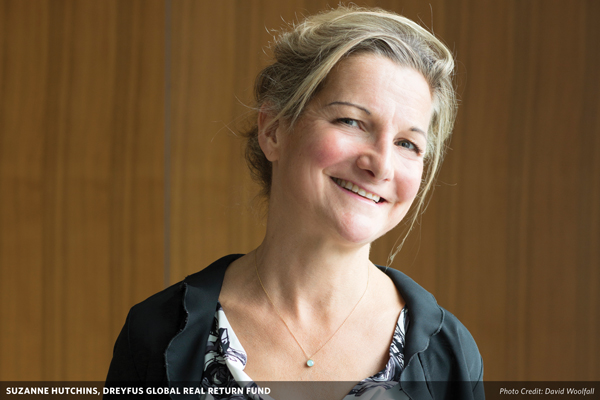Many think the U.S. bull market is long in the tooth, and that equity valuations are too stretched. But the U.S. stock market is riding on some powerful tailwinds.
Corporate cash flow is healthy. There have been waves of companies confident enough to buy back stock following a plunge in corporate tax rates. U.S. companies are also enjoying an increasingly favorable regulatory environment. Meanwhile, unemployment is at historic lows and economic growth seems to be picking up.
For Suzanne Hutchins, who manages the Dreyfus Global Real Return Fund with Aron Pataki and a team of analysts, those trends are masking some sizable risks, and she worries the chickens could come home to roost sooner rather than later. For years, she says, low interest rates have encouraged rampant borrowing among companies, consumers, investors and governments.
“There is about 40% more outstanding debt in the world today than there was just before the financial crisis in 2008,” she says. “Having high levels of debt doesn’t matter too much when inflation and interest rates are low, but it becomes a big issue when interest rates rise.” At the same time, an aging global population means fewer workers contributing to economic growth, resulting in lower productivity and changes in spending.
In the equity market, valuation expansion, rather than actual earnings growth, has driven most of the returns for the last several years. In 2012, stocks in the S&P 500 traded at 14 times trailing 12-month earnings. By the beginning of 2018, that number had exploded to 22.3. While stock buybacks support prices to the benefit of shareholders, they do little to improve the economy.
“It’s also not clear that [Donald] Trump’s tax cuts will feed the economy and lead to growth,” Hutchins says. “And some economic indicators, such as wage growth and manufacturing output, are quite tepid. Yet the market doesn’t seem to recognize that we are at the end of the current business cycle. Interest rates are starting to increase and liquidity is tightening. These risks aren’t being priced into risk assets.”
A report released this summer from fund subadvisor Newton Investment Management, the subsidiary of BNY Mellon where Hutchins works, warns that “the worst investments tend to be made when money is cheap, valuations are rich, the economic outlook is optimal, optimism is infectious and prospective returns are at their lowest. There are times when investors should focus on making money, and there are times when they should seek not to lose too much. Since late last year, we believe that we have been moving from the first situation to the second, and that a cautious approach is warranted.”
Hutchins thinks the odds are good that the downside protection, low volatility and low equity market correlation of the Dreyfus Global Real Return Fund will look better and better to investors as the cracks in equity market pillars widen and grow.
Instead of reaching for outsize returns in a bull market, this and other real return funds seek to deliver less volatile performance with a low correlation to the stock and bond markets. The fund’s goal is to return the one-month London interbank offered rate, or LIBOR, plus 4% annually before fees over five years. The firm’s literature says that the fund “is generally used to take some risk off an equity position,” and as a hybrid offering can be included on either the fixed-income or equity side of a client’s portfolio.
The Bull On Wobbly Legs
October 1, 2018
« Previous Article
| Next Article »
Login in order to post a comment








